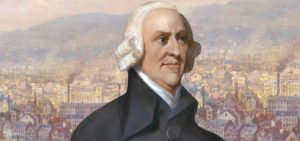An ideology is a set of ideas by which people posit, explain, and justify the ends and means of organized social action, irrespective of whether such action aims to preserve, amend, uproot or rebuild social order.[1] Liberalism is seen as the fundamental form of modern ideology because of the simplicity of its criterion.
Liberalism has been the major ideology of political philosophy. Liberal ideology in the widest sense stresses individual liberty. The liberal ideology argues that individuals have some certain inalienable rights. Liberalism is a comprehensive ideology with political, philosophical, and socio-economic dimensions. The concept of “liberal” in Europe has had different meanings since the 14th century. The word “liber” in Latin is used to imply the “free” people. However, the term “liberal” has also been used to mean “generous” referring to open-handed people.
From a historical point of view, we can summarize the evolution of liberalism as follows: liberalism emerged as a revolutionary ideology reflecting the ambitions of the rising bourgeoisie in relation to the abolition of feudalism. Liberalism won its main political victories in the revolutions in England, the US and France in the 17th and 18th centuries.

Adam Smith
The concept of “liberalism” was first expressed in the Wealth of Nations by Adam Smith. Liberalism can be defined in the broadest terms as an ideology that accepts liberty as the most fundamental value of life and defends political, legal and economic structures that fit to liberty. The elements of liberalism include individualism, freedom, self-emergence, justice, equality, market economy, constitutionalism and limited state.
Classical liberals don’t attach importance to concepts expressing collective totality such as benefit of the society or public interest. According to classical liberals, property is a prerequisite for the development of the individual and gaining property is a natural right and a necessary element to ensure equality of opportunity.
On the other hand, liberalism has been constantly reshaped and has, over time, split into different branches. For example, neo-liberalism has much more to say about the relationship between state and economics. The greatest representative of the neo-liberals is Friedrich A. Von Hayek (1899-1992). It is known that, from the late 19thcentury, a form of social liberalism favouring welfare reforms emerged under pressure from organized labour. Bolstered by the economic theories of John Maynard Keynes, social liberalism became hegemonic in the wake of the 1930s crisis. Neo-liberalism emerged as an ideological response to the crisis of the “Keynesian welfare state”.
Neo-liberal policies can be briefly summarized as abolishing the legal and bureaucratic obstacles that prevent the accumulation and participation of the private sector, providing an environment in which the price levels in the labor market can spontaneously occur, reducing the expenditure of the state in the social arena and privatization. This kind of state in liberal ideology is described as a “night-watchman state” and the sole purpose of the minimal state is to protect the fundamental aspects of public order. It can be said that, neo-liberalism is based on the application of the nineteenth-century classical liberal economics ideas to today’s conditions.
It is still questioned whether or not neoliberalism is the prevailing trend in the world today, there is only one thing that is certain: liberal ideology has been redefined through history and it has an amorphous structure depending on place and time.
Dr. Begüm BURAK
[1] Seliger, Martin (1976), Ideology and Politics. London: Allen & Unwin, p. 14.




















































